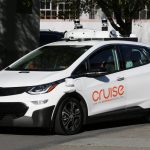Self-driving? You’re gonna need a bigger data plan
Self-driving? You’re gonna need a bigger data plan

Smart technologies promise to connect us to our environment in new and exciting ways, but this increased connection comes at a cost. As more devices go online and transmit mass amounts of data to the cloud, the cloud itself needs to be capable of quickly receiving, analyzing, and returning that data.
During his keynote at the Intel Developer Forum, Intel CEO Brian Krzanich stated: “The average person today generates about 6-to-700 megabits a day. By 2020, the estimate is 1.5 gigabytes a day for the average person.” He continued, “The average autonomous vehicle, by 2020, will produce 4,000 gigabytes per day.”
See also: White House offers $ 400 million for next-gen wireless research
That is a lot of data. In fact, it comes out to roughly 1 Gbps when you look at all the various sensors and cameras that a fully-functional autonomous vehicle requires. Long-range radar, lidar, cameras, short and medium-range radar, and ultrasonic sensors enable the vehicle to have a full, 360-degree view of its surroundings.
To put it another way, an estimated four petabytes of data is going to be generated by each autonomous car on the road every year. That type of data would take today’s average wireless user over 167,000 years to top.
Intel’s solution to this massive data problem is to give the vehicles themselves the ability to take this data, process it, and convert it into actionable information locally. But this is only part of the solution. There will still need to be some form of communication with the cloud in order for an autonomous vehicle to make sound decisions about where it is going and what the best possible path is to get there.
Traffic analysis, mapping, weather updates, finding business addresses, and more are still areas where having a constant connection to the cloud is necessary. Not only that, but the companies that create these autonomous vehicles will need access to some of that data in order to improve on their systems and troubleshoot issues. This data is valuable, and companies will be hard-pressed to let it disappear.
Enter new wireless standards
5G, which is currently in research and development phase among top communications companies, is expected to be made available as early as 2018 during the Winter Olympics, but this is early speculation as there isn’t even a standard yet for the next-generation wireless technology. Even if this demonstration is successful, there are years of rollout required before 5G connections are available in most areas.
For telecom companies, there is very little benefit to this rapid expansion of their networks. While you can charge an arm and a leg for a smartphone’s data plan, can you do the same for that user’s car? Monetization drives businesses to build, and while the White House is doing its part by providing funding incentives for 5G research and development, the long-term costs involved with building and maintaining these new, more powerful networks will ultimately fall on these companies and their customers.
Autonomous cars are coming. The question is, are our wireless networks going to be ready for them?
The post Self-driving? You’re gonna need a bigger data plan appeared first on ReadWrite.
(8)












